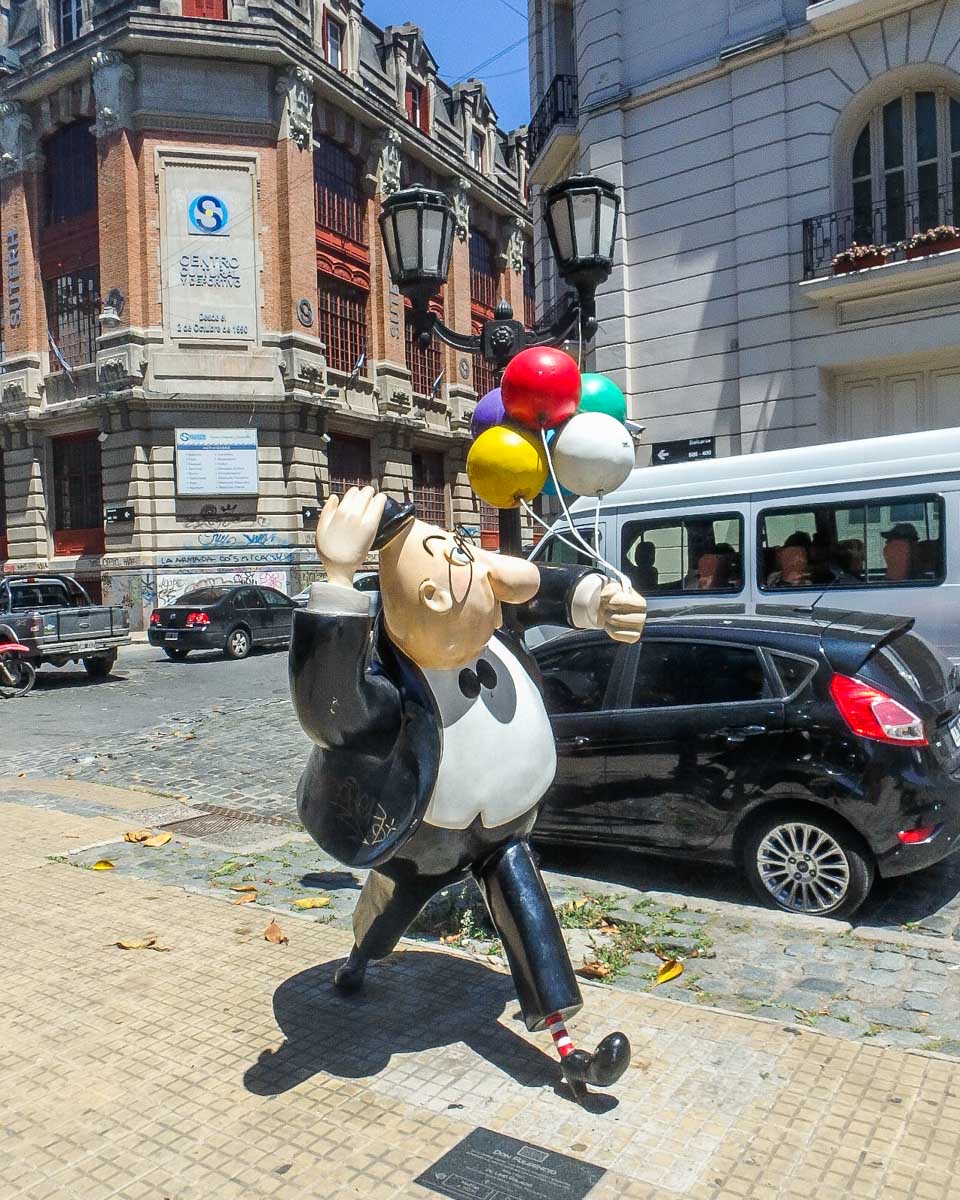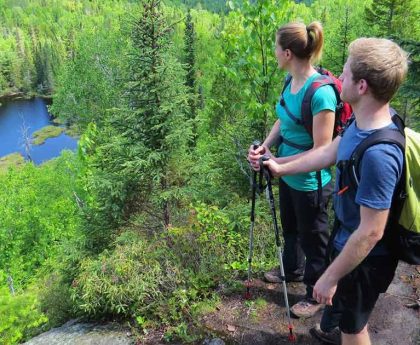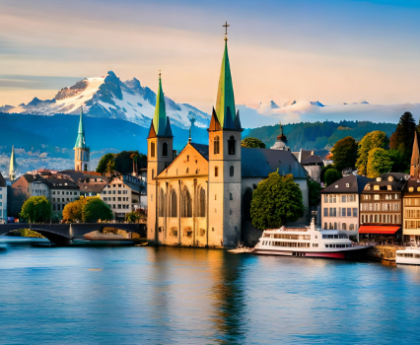img#mv-trellis-img-2::before{padding-top:125%; }img#mv-trellis-img-2{display:block;}img#mv-trellis-img-3::before{padding-top:125%; }img#mv-trellis-img-3{display:block;}img#mv-trellis-img-4::before{padding-top:125%; }img#mv-trellis-img-4{display:block;}img#mv-trellis-img-5::before{padding-top:125%; }img#mv-trellis-img-5{display:block;}img#mv-trellis-img-6::before{padding-top:66.666666666667%; }img#mv-trellis-img-6{display:block;}img#mv-trellis-img-7::before{padding-top:66.666666666667%; }img#mv-trellis-img-7{display:block;}img#mv-trellis-img-8::before{padding-top:66.666666666667%; }img#mv-trellis-img-8{display:block;}img#mv-trellis-img-9::before{padding-top:125%; }img#mv-trellis-img-9{display:block;}img#mv-trellis-img-10::before{padding-top:125%; }img#mv-trellis-img-10{display:block;}img#mv-trellis-img-11::before{padding-top:66.666666666667%; }img#mv-trellis-img-11{display:block;}img#mv-trellis-img-12::before{padding-top:66.666666666667%; }img#mv-trellis-img-12{display:block;}img#mv-trellis-img-13::before{padding-top:66.666666666667%; }img#mv-trellis-img-13{display:block;}img#mv-trellis-img-14::before{padding-top:66.666666666667%; }img#mv-trellis-img-14{display:block;}img#mv-trellis-img-15::before{padding-top:125%; }img#mv-trellis-img-15{display:block;}img#mv-trellis-img-16::before{padding-top:125%; }img#mv-trellis-img-16{display:block;}img#mv-trellis-img-17::before{padding-top:125%; }img#mv-trellis-img-17{display:block;}img#mv-trellis-img-18::before{padding-top:125%; }img#mv-trellis-img-18{display:block;}img#mv-trellis-img-19::before{padding-top:66.666666666667%; }img#mv-trellis-img-19{display:block;}img#mv-trellis-img-20::before{padding-top:125%; }img#mv-trellis-img-20{display:block;}img#mv-trellis-img-21::before{padding-top:125%; }img#mv-trellis-img-21{display:block;}img#mv-trellis-img-22::before{padding-top:125%; }img#mv-trellis-img-22{display:block;}img#mv-trellis-img-23::before{padding-top:125%; }img#mv-trellis-img-23{display:block;}img#mv-trellis-img-24::before{padding-top:66.666666666667%; }img#mv-trellis-img-24{display:block;}img#mv-trellis-img-25::before{padding-top:66.666666666667%; }img#mv-trellis-img-25{display:block;}img#mv-trellis-img-26::before{padding-top:66.666666666667%; }img#mv-trellis-img-26{display:block;}img#mv-trellis-img-27::before{padding-top:66.666666666667%; }img#mv-trellis-img-27{display:block;}img#mv-trellis-img-28::before{padding-top:66.666666666667%; }img#mv-trellis-img-28{display:block;}img#mv-trellis-img-29::before{padding-top:66.666666666667%; }img#mv-trellis-img-29{display:block;}img#mv-trellis-img-30::before{padding-top:66.666666666667%; }img#mv-trellis-img-30{display:block;}img#mv-trellis-img-31::before{padding-top:66.666666666667%; }img#mv-trellis-img-31{display:block;}img#mv-trellis-img-32::before{padding-top:125%; }img#mv-trellis-img-32{display:block;}img#mv-trellis-img-33::before{padding-top:125%; }img#mv-trellis-img-33{display:block;}img#mv-trellis-img-34::before{padding-top:66.666666666667%; }img#mv-trellis-img-34{display:block;}img#mv-trellis-img-35::before{padding-top:66.666666666667%; }img#mv-trellis-img-35{display:block;}img#mv-trellis-img-36::before{padding-top:66.764705882353%; }img#mv-trellis-img-36{display:block;}img#mv-trellis-img-37::before{padding-top:66.764705882353%; }img#mv-trellis-img-37{display:block;}img#mv-trellis-img-38::before{padding-top:66.764705882353%; }img#mv-trellis-img-38{display:block;}img#mv-trellis-img-39::before{padding-top:66.666666666667%; }img#mv-trellis-img-39{display:block;}
This blog may contain affiliate links. Read our disclosure policy for more info.
Buenos Aires is one of those cities that leaves its mark on you – in a good way, I promise! This city is the beating heart of the country and definitely, one of the highlights of Argentina you have to visit at least once. With its rich blend of architecture, incredible food, wide variety of tours, and energetic nightlife, This capital city is one of the places in Argentina you definitely don’t want to miss.
It can feel overwhelming at first but trust me, it won’t take long for Buenos Aires to capture your heart.
The city is made up of 48 neighborhoods (called ‘barrios’), each with its own vibrant personality. You can bet that there’s something interesting to do in each one! Honestly, you could spend years in this city and never get bored.
The likelihood is, however, that you don’t have years to spend in Buenos Aires and that’s why we’ve put together this guide. This way you can make the most of your time here – whether you’re visiting Buenos Aires for a few days, or live here and want something new to try.
Here are the best things to do in Buenos Aires to make sure you enjoy your time in this amazing city.
The BEST Things to do in Buenos Aires, Argentina
1. Go on a free walking tour



One of the best sightseeing tours in Buenos Aires is actually free! A walking tour is an excellent way to get acquainted with a new city – especially one as big as Buenos Aires. You’ll learn all about the city’s history, culture, and architecture while getting some exercise, too. It’s also a very wallet-friendly way to meet fellow travelers.
There are several companies offering free walking tours in Buenos Aires, but the most reputable is Buenos Aires Free Walks, so that’s who we went with. They have two free walking tours on offer: the City Center, and Retiro & Recoleta.
The City Center Tour is more focused on the political history of Buenos Aires. You’ll start at the National Congress and make stops at several important landmarks as you learn about Argentina’s fascinating history, from the prosperity of the early 1900s to The Dirty War. As the name suggests, this was one of the darkest periods in the country’s past.
The Retiro and Recoleta Tour is more cultural, focusing on the city’s parks, architecture, and religious landmarks. As you walk through some of Buenos Aires’ most beautiful areas, you’ll learn about some of the city’s famous figures, from war heroes to eccentric aristocrats.
The City Center Tours run Monday to Saturday at 3 pm and last for 2.5 hours. The Retiro and Recoleta tours are on Monday to Saturday at 10:30 am, lasting 3 hours. This means that you can easily do both (and you may as well since it’s free!).
However, if you only have time for one, we prefer the Retiro and Recoleta tour. It was more engaging and really showed us the character of the city.
The only downside to free walking tours is that the groups can get pretty big, which can be a bit overwhelming. If you want a more intimate experience, we recommend opting for a paid walking tour instead.
And of course, remember that free tours are always tip-based – so be generous!
2. Walk the colorful streets of La Boca




For us, La Boca was the best neighborhood in Buenos Aires (although admittedly, we didn’t visit all 48). La Boca is known for its colorful houses, live music, buzzing bar scene, and amazing art museums. It’s a powerhouse of creativity and energy, and it’s impossible not to have a good time here.
If you took high school Spanish then you might remember that “la boca” means “the mouth.” This is because La Boca was the port area where all the ships coming into Buenos Aires would dock. Over time, it became a working-class Italian neighborhood and it still retains that feeling today, despite the fact that the area has become one of the most popular Buenos Aires tourist attractions.
Caminito is the most popular street in La Boca. It’s a pedestrianized street lined with brightly painted houses, cafes, and art galleries. It’s one of, if not the most, famous tango spots in the city. You’ll often see tango dancers performing on the cobbles. If you’ve ever wanted to come to Argentina and learn to tango, this is the place to do it!
Buenos Aires Free Walks also offer a great tour of La Boca, which will teach you all about the neighborhood’s history, culture, and architecture. The tour ends with a trip to the Boca Juniors soccer stadium, one of the most iconic sporting venues in Argentina. This tour isn’t free, but for $10 USD, we thought that this was a pretty good deal!
3. Take a walk through Reserva Ecológica Costanera Sur


A visit to the Buenos Aires Ecological Reserve is definitely one of the best Buenos Aires activities for nature lovers.
It’s a large nature reserve that is located along the city’s waterfront. It’s a great place to escape the hustle and bustle of the city and get some fresh air. While we loved Buenos Aires, it was definitely nice to press pause on the chaos for a second.
The reserve was formed in 1986 when the city decided to convert a landfill site where old building materials were dumped into an urban oasis. Today, it’s home to a huge variety of birds, mammals, and reptiles, including black-necked swans, egrets, and capybaras.
The best way to get to the reserve is by taking one of the city’s famous yellow and black taxis. Choose a taxi that has a “radio taxi” rooftop sign, as this means that it’s registered and you won’t be ripped off. In the event that you have a problem, you’ll be able to call the company and register a complaint afterward.
The park is open from 9 am until 6 pm every day except Monday when it is closed. There’s no entrance fee, meaning that exploring this green space is one of the best free things to do in Buenos Aires.
Once you’re inside the reserve, there are several walking trails to choose from, as well as a few lookout points where you can admire the city skyline. We found that the eastern side of the park offered the best views.
You can also rent a bike from one of the kiosks inside the reserve and explore that way.
4. Take a private tour of the city


A private tour is a really great way to cover multiple Buenos Aires tourist attractions in a single day. Since you’ll be accompanied by an expert local guide, it’s also a good option for those who are hungry for knowledge as well as the city’s excellent food.
If you’re in a group of up to four people, this private tour is perfect for getting to know Buenos Aires better. You’ll travel in a car as well as walk to certain places of interest, meaning that you’ll cover a lot of ground over the course of four hours.
The tour includes 12 stops. We won’t bore you by listing all of them, but some of the highlights include Casa Rosada, the seat of the Argentine government; the San Telmo market; and La Bombonera stadium, which is one of the most famous soccer stadiums in the world.
The best thing about this tour is that you can customize it to your own interests. So if there’s something you’ve already seen and want to skip, just say the word! Or if you’ve got some time left at the end of the tour and want to revisit one of the stops, that’s no problem either.
The price of the tour starts at $112 USD per car, and you can have up to four participants. It should be noted, though, that you’ll need to pay for your admission to La Bombonera Stadium, which costs around $6 USD.
If you want to tick off as many Buenos Aires activities as possible during your time here, then a tour is definitely the way to go.
5. Enjoy a meal or coffee at Gran Café Tortoni


Gran Café Tortoni is an iconic Buenos Aires coffeehouse that’s been around since 1858. It’s one of the oldest cafes in the city, and has a rich history, having been frequented by some of Argentina’s most famous writers and artists.
These days, the cafe is just as popular as ever, and it’s actually one of the most popular Buenos Aires tourist attractions for food and drink. It has even been named one of the most beautiful cafes in the world!
You’ll find the cafe located along the main street that runs through the city center. Officially, it opens at 8 am every day but that’s not always the case in reality, so it’s better to head there later in the morning for your daily dose of caffeine.
Now, Google will tell you that Café Tortoni closes at 9 pm, but the locals know otherwise. Often, the place will be open until 1 or 2 am (or even 3 am if the crowd is that good).
Every weeknight, there’s a tango show in the basement of Café Tortoni. It starts at 8 pm and tickets cost around $13 USD. You can buy tickets in advance at the cafe, so you’re guaranteed a spot. In our opinion, it’s well worth the fee, because you’ll get to see some of the best tango dancers in the city perform in an intimate setting.
Most people don’t come to Café Tortoni to eat a full meal. It’s more of a spot for a merienda, or light snack. You can’t go wrong with a picada, a typical Argentine meat and cheese platter, or an indulgent dulce de leche.
6. Join a cooking class




Argentine cuisine is out of this world, so why not learn how to cook some of the country’s most iconic dishes while you’re here?
This cooking class takes place in a local home, where you’ll learn how to make things like empanadas, steak, chimichurri sauce, and dulce de leche ice cream. And obviously, you’ll get to enjoy the fruits of your labors while sipping wine with your host.
Food is a really important part of Argentine culture, so a cooking class is a great way to learn more about the country and its people. The class lasts for 3.5 hours and costs $127 USD per person, although for an extra $44 USD there’s the option to upgrade and add a tango lesson if you want to!
7. Wander Plaza de Mayo


Plaza de Mayo is the main square of Buenos Aires. A lot of Argentina’s major political events have taken place here over the years. It has seen revolutions, political demonstrations, and many public gatherings.
The most notable building on Plaza de Mayo is the striking pink building known as Casa Rosada. It’s the seat of the Argentine government.
You’ll also see the Metropolitan Cathedral, which is the main church of Buenos Aires, and the headquarters of the Banco de la Nación, the national bank of Argentina.
If you’re in the square at 3:30 pm on a Thursday, you’ll see the Madres de la Plaza de Mayo marching by. This organization was founded by a group of mothers whose children disappeared during the country’s military dictatorship, and they continue to march every week to demand justice. It’s a haunting but moving reminder of Argentina’s past.
8. Stare in awe at the Palacio Barolo


The Palacio Barolo is one of those gorgeous landmarks that just seems way too nice to be an office building – and yet, that’s what it actually is.
Admittedly, it was originally designed to house Dante’s ashes because Luis Barolo, a legendary Italian businessman, believed that Europe was on the verge of collapse after the First World War and wanted to keep the poet’s remains as far away from the continent as possible.
It’s pretty fitting, then, that the Palacio Barolo was inspired by Dante Alighieri’s famous poem The Divine Comedy. The basement and ground floor are supposed to represent hell, while floors 1-14 symbolize purgatory and 15-22 constitute heaven.
We can’t help but wonder whether the employees who work here ever feel like they’re stuck in one of Dante’s circles!
Construction of the Palacio Barolo began in 1919, and when the building was finished in 1923, it enjoyed the title of the tallest building in South America until 1935 when the Kavanagh Building knocked it off the top spot.
You’ll find this extraordinary building on Avenida de Mayo, one of the main streets in Buenos Aires. It’s a short taxi ride or a 15-20 minute walk to the west of Plaza de Mayo. There are guided tours available daily every day except Sundays and Tuesdays. You can book online in advance, but just note the website is in Spanish. Tickets are 4,200 Argentine pesos or about $30 USD.
9. See a show at Teatro Piazzolla


Tango is an iconic part of Argentine culture, and there’s no better place to see it performed than at Teatro Piazzolla. This beautiful theater is dedicated to the famous Argentine composer and bandoneón player, Astor Piazzolla.
The theater is located in the city center, just a five-minute walk from the Plaza de Mayo.
Going to see a tango show in Buenos Aires is one of those quintessential activities and the way the dancers move will make your jaw hit the floor. There are two main options if you want to arrange a show yourself.
You can either purchase tickets online for $75 USD, which covers two drinks and a 60-minute tango show, or you can go for the $100 USD package which also includes a three-course dinner. You can also buy a skip-the-line ticket for ease of getting in.
A lot of the packages also include the option for a quick tango lesson before the real show starts. Don’t worry, it’s a beginners’ lesson, so it’s okay if you have two left feet!
If you want to make things super simple, you can always book a tango show and dinner tour which takes care of everything for you. This particular tour is $149 USD and includes transport to and from your hotel, and you can choose whether or not you want to include dinner.
10. Have a drink at The Federal Bar


Whether you’re a drinker or not, grabbing a beverage at The Federal Bar is one of the best things to do in Buenos Aires.
This historic spot is located in the San Telmo neighborhood, just a short walk from Plaza Dorrego. It’s one of those great bars that draws in both locals and tourists, so it’s the perfect place to mingle and get a taste for what life is really like in Buenos Aires.
The Federal Bar opened its doors in 1864 and was one of the first establishments in Buenos Aires to serve alcohol. Its walls are adorned with vintage ad posters and it has a beautiful lowered bar with a stained glass mantel.
One of our favorite things about The Federal Bar, though, was the fact that there’s a hidden bookstore inside! How cool is that?
Whether you want coffee, wine, or something from the 25-page menu, The Federal Bar won’t disappoint. What really draws people here, though, is the atmosphere. It’s a relaxed spot where you can sit and soak up the cultural heritage of Buenos Aires for hours on end – and since it’s open from 8 am – 2 am, many choose to do just that.
11. Enjoy an authentic gaucho experience
Gaucho culture is an integral part of Argentine history, and there are few things more authentically Buenos Aires than spending time on a working estancia (ranch).
Gaucho means “cowboy” in Spanish, and these men have been a fixture of Argentine culture since the country was first settled. In the past, they were known for their hard work and bravery, and today they’re celebrated for their traditional skills and way of life. To experience this lifestyle firsthand, we recommend taking a gaucho tour in Buenos Aires.
An estancia tour is a great way to learn about gaucho culture and get a taste of what life is like on an Argentine ranch. You can take a horseback ride (or a horse-and-cart tour, if you’re not a confident rider), feast on a delicious barbecue lunch, and be regaled with tales of gauchos from times gone by.
We’re definitely glad we took a small group tour since it was a more intimate experience and we felt like we got to know our gaucho guides better. Prices start from $159 USD per person so it’s one of the pricier Buenos Aires activities on this list but if you can swing it, we totally thought it was worth it.
12. Party!
Viva la fiesta! Partying is a popular Buenos Aires activity, and people here are all about the buena onda (good vibes). Generally, when I travel, I don’t like to spend too much time partying, but I still like to head out for a night or two on the town.
From rooftop shindigs to underground dance parties, there’s something for everyone here, no matter how you like to let loose.
Palermo is the nightlife epicenter, with most of the city’s best clubs and bars located in this trendy neighborhood. Clubbing is a big deal here, and people love to dress up and socialize. If you want to see (and be seen), Palermo is the place to be.
San Telmo, meanwhile, is where you should go if you want a more relaxed atmosphere. This historic neighborhood is home to a number of bars and clubs with a more local feel.
One thing that I really loved about Buenos Aires was the speakeasies. The Victoria Brown Bar is a cafe by day and a Prohibition-era bar by night. It’s a steampunk-style spot that was inspired by the love affair between Queen Victoria and her servant, John Brown. Whether the affair actually happened or not is up for debate, but the bar is definitely worth a visit.
One of our favorite places to party in Buenos Aires is Glam Disco, a chic LGBT nightclub located in the Palermo Hollywood neighborhood. This is a fun spot for a night out, and it attracts a great crowd. The music is mainly electronic and the vibe is very sleek and trendy.
Meanwhile, head to a ‘milonga’ for a taste of traditional Argentine nightlife. A milonga is a tango dance hall, and these spots are usually pretty relaxed (at first, anyway – things can get rowdy as the evening goes on!).
If you don’t know how to tango, head to La Catedral Club in barrio Almagro, which is a very beginner-friendly spot. And if you want to keep on moving late into the night, La Viruta Tango Club in Palermo is open until 3 a.m. most nights.
13. Interactive dining experience




The food was one of our favorite things about Buenos Aires, and this interactive dining experience took it to a whole new level.
Not only do you learn how to make local specialties like empanadas and alfajores, you’ll also get to sample some great local wines and discover how to pair them properly. If you upgrade to the mixology option, you’ll learn how to make wine-based cocktails under the guidance of a professional sommelier and mixologist.
The Argentine Experience class uses premium-grade beef, boutique wines, and fresh seasonal ingredients, so you know you’re in for a treat. And the best part is that you get to enjoy your creations at the end of the class!
The group size is limited to 14, so you get to know the other participants pretty well. If you’re traveling solo, then this would be a really great way to make some new friends in Buenos Aires.
The price starts at $95 USD for the dining experience alone, or $120 USD if you add the mixology class. It’s also worth noting that transportation isn’t included, so you’ll have to make your own way there and cover the cost of your own taxi. The experience takes place in the Fitz Roy 2110 restaurant which is in the Palermo district. This is the city’s nightlife hub, so if you fancy a night out after class, you’ll be in the right place!
14. Make the trip to Iguazu Falls


Breathtaking is probably the best word to describe Iguazu Falls and honestly, I don’t know if it does this waterfall justice.
Situated on the border of Argentina and Brazil, this natural wonder is one of the largest waterfalls in the world. In fact, it’s actually a system that consists of 275 individual falls!
The falls are located within Iguazu National Park, which is over 1,000 kilometers (600 miles) away from Buenos Aires. So no, it’s not exactly a short trip but it would be an absolute travesty to miss out on this natural wonder when you’re in Argentina.
There are two ways to get to the Iguazu Falls from Buenos Aires: flying or taking an overnight bus.
You can fly from Jorge Newberry airport to Cataratas del Iguazú for around $150 USD return. The flight takes just under two hours and there are several daily departures.
There are also a few flights from Ministro Pistarini International Airport, the other main airport in Buenos Aires, but these are less frequent.
Alternatively, you can take an overnight bus from Buenos Aires’ Retiro station to Puerto Iguazu for around $200 USD. The journey takes about 18 hours and there are several departures throughout the day and into the evening.
The bus to the falls used to be significantly cheaper than flying, but the arrival of budget airlines in Argentina certainly makes flying the more convenient option. Most travelers spend a few days at the falls, so there’s no need to pay extra for checked baggage.
The falls are split across the Argentina-Brazil border, and both countries have their own national parks.
The Brazil side offers a more panoramic view of the falls, while the Argentine side gives you a closer view of the individual falls. You can easily visit both sides in one day by taking a bus ride across the border. You may need a visa depending on your nationality, but border control is famously lax.
If you don’t want the hassle of organizing everything yourself, you can book a tour from Buenos Aires which will include return flights, accommodation, and transfers. Prices start at around $850 USD per person and you’ll get to enjoy both sides of the falls.
Related read: If you’re up for another epic destination, head to ‘The End of the World.’ It’s pretty remote, but visiting Ushuaia, Argentina is an unforgettable experience.
15. Go wine tasting




Argentina is world-famous for its wines, and there are several regions within the country that produce some outstanding varieties.
The most famous wine region is Mendoza, but that’s over 1,000 kilometers (600 miles) away from Buenos Aires. However, there are some excellent vineyards much closer to the city.
Bodega Gamboa is a popular modern winery where you can enjoy some excellent Malbec wines and a picnic in the vineyards. You can organize a visit yourself or go on a guided tour and have everything taken care of for you.
If you’re operating on a tighter budget, don’t worry – there are plenty of amazing places to go wine tasting in the city itself. You can enjoy an intimate wine tasting experience in an underground cellar for as little as $47 USD.
Equally, you can just take yourself to a wine bar and enjoy a glass (or two… or three!) of Argentina’s finest with some delicious food.
One of our favorites was Vico Wine Bar Villa Crespo, a unique and modern wine concept bar. You receive a card on arrival that you top up with money and then use to pay for wine by the glass. It’s self-serve, but there are expert sommeliers on hand to advise you if needed.
Related Read: If you are a wine lover, be sure to check out all the other fun things to do in Mendoza (including going on multiple wine tours!)
16. River Plate Museum


The River Plate Museum is one of the biggest sports museums in the world, so it’s a must for any soccer fan.
In case you’re not a sports aficionado, River Plate is one of the most successful soccer clubs in Argentina. This museum covers the club’s entire history, from its humble beginnings in 1901 to its many trophies and accolades.
Soccer is such a huge part of Argentine culture that it’s a really interesting museum even if you’re not a huge fan yourself.
The museum is located in the Monumental Stadium, which is the home of River Plate, and you can easily combine a visit with a tour of the stadium itself.
The easiest way to get to the museum is to take a bus from Retiro station to Scalabrini Ortiz. From there, it’s a 5-minute walk to El Monumental. The journey takes around 15 minutes and ticket prices can be as little as $1 USD each way.
A guided tour of the River Plate museum plus skip-the-line entry costs around $34 USD. .
17. Enjoy a traditional Argentinian BBQ


You might think that you’ve had great barbecue before, but trust me, you haven’t had anything until you’ve tried an Argentinian asado. An asado is a traditional barbecue where meat is cooked over an open fire. It’s a very social affair with plenty of wine and fernet, a local herbal liqueur.
The Terracita Asado Barbecue tour is an authentic asado experience in the Palermo neighborhood. You’ll learn all about how to prepare and cook the meat properly while relaxing on a rooftop terrace and sipping on a glass of Malbec and getting to know your host.
The experience costs around $75 USD per person and it’s a private group tour, so it will be just you and your friends or family.
Related read: One of the best traditional Argentinian BBQ meals I had was cooked on a Parrilla in El Chalten, Argentina. SO good!
18. Go for a meal or drink along Avenue Alicia Moreau de Justo


Alicia Moreau de Justo Avenue is one of the most important streets in the Puerto Madero area. It’s a wide tree-lined boulevard that runs parallel to the river, and it’s home to some of the best food and drinks in Buenos Aires.
By this point in this blog post, you can probably tell that that’s saying something!
Definitely check out Happening, an asado restaurant with a fun but relaxed atmosphere. You can sit and watch the boats go by as you tuck into your steak and enjoy a cold beer or glass of wine.
If you’re really hungry, then head to La Bistecca, an all-you-can-eat buffet restaurant where you can fill your boots with a huge selection of meats, salads, and sides.
For a drink afterward, head just across the river to check out the gorgeous Crystal Bar. It’s on the 32nd floor of the fancy Alvear Icon hotel. The cocktails are excellent, but the real draw here is the panoramic city views that you can soak in as you sip.
19. Explore the botanical gardens


Visiting the Buenos Aires Botanical Garden is great if you need a break from the hustle and bustle of the city. The gardens are huge, and they’re home to an impressive variety of native and exotic plants. Here you’ll find an enormous variety of birds, butterflies, cacti, and mushrooms, to name just a few.
Entry to the gardens is free, so this is one of the best Buenos Aires activities for travelers on a budget. You can visit any day of the week except for Mondays when they are closed.
From September 22 to March 21, the gardens are open from 8 am to 7 pm on Tuesday through Friday or from 9:30 am to 7 pm on weekends and holidays.
From March 22 until September 21, the gardens close at 6 pm every day. Last admission is always 30 minutes before closing time.
It’s possible to take a bus for around $1 USD each way, so a botanical garden visit really is one of the cheapest (and prettiest) things to do in Buenos Aires!
20. Drink delicious craft beer


Buenos Aires isn’t just about the wine (although, let’s be honest, that is a big part of the appeal!) – there’s also a great craft beer scene here too. In recent years, microbreweries have been popping up all over the city – in fact, you’ll probably struggle to find a street without one!
Antares is probably the most famous because it was the first microbrewery in the city, but we definitely found a few other favorites during our time in Buenos Aires.
The Capital Beer
With friendly staff, a great atmosphere, and, most importantly, an amazing selection of real ales, it didn’t take long for The Capital Beer to win our hearts. If we lived in Buenos Aires, this would definitely become our local spot!
This spot is about a 15-minute taxi ride from Palermo and happy hour is from 5 – 8 pm every single day!
Cervecería Patagonia
This is arguably one of the best-loved breweries in Buenos Aires. You’ll find the Cervecería Patagonia brand all over the city, serving amazing asado and even better beer to wash it down with.
Temple Brewery
Temple Brewery is an experimental brewery, which means that they’re always coming up with new and interesting flavors for you to try. It’s definitely worth paying a visit to their taproom along the Puerto Madero waterfront.
Buller
An eclectic brewery in the Recoleta neighborhood, Buller is definitely worth a visit. The space has an industrial feel and the beer list is impressive, with something to suit every taste and great views to enjoy.
21. Shop at the San Telmo Market


San Telmo is one of the most atmospheric and historic neighborhoods in Buenos Aires, and it’s also home to a huge indoor market where you can find fresh fruit and veggies alongside amazing street food stalls and antique stores.
The San Telmo Market is a five-minute walk from Plaza Dorrengo, where you can often spot tango dancers honing their craft.
The market is open every day of the week, although some stalls and shops are only open on weekends.
This is not one of those markets that gets going at the crack of dawn. If you visit around 10 am, you’ll be able to get a coffee and some breakfast without having to wait too long, and then you can sit and people-watch as the area comes to life.
However, the market is open until 9 pm on weekdays, 10 pm on Saturday and 8 pm on Sunday, so it’s also a great place to come and grab some dinner and a drink after a long day of exploring.
22. Visit the Planetarium


You can’t miss a visit to this huge, UFO-shaped planetarium while you’re here – it’s one of the most iconic Buenos Aires tourist attractions!
The Planetario Galileo Galilei is located in Parque Tres de Febrero in the Palermo neighborhood.
In the projection room, you can see dazzling light shows about the stars and planets, while there are also exhibits featuring meteorites and other space-related objects.
The planetarium is open every day of the week except for Monday, and tickets to the astronomical shows cost 300 pesos or about $2 USD.
It’s a great place to visit for travelers of all ages, but it’s definitely one of the best things to do in Buenos Aires with kids (or if you’re a big kid yourself.)
23. Drink mate


Mate is a traditional Argentine beverage, made from dried and ground yerba mate leaves. It’s full of vitamins and antioxidants, but it’s about so much more than that. In Argentina, mate is about coming together, sharing and enjoying good company.
You’ll see people drinking mate all over the city, at any time of day. It’s usually brewed with hot water, rather than boiling water, and then sipped through a metal straw from a shared cup.
There’s no shortage of yerba mate bars in Buenos Aires, but some great spots are Las Cabras in Palermo and Cumaná in the Recoleta neighborhood.
However, if you really want to become a mate expert, you can book a tasting experience with two super friendly local mate masters and learn all about this unique Argentine tradition. It’s really affordable too, at under $25 USD per person.
24. Bike around Buenos Aires

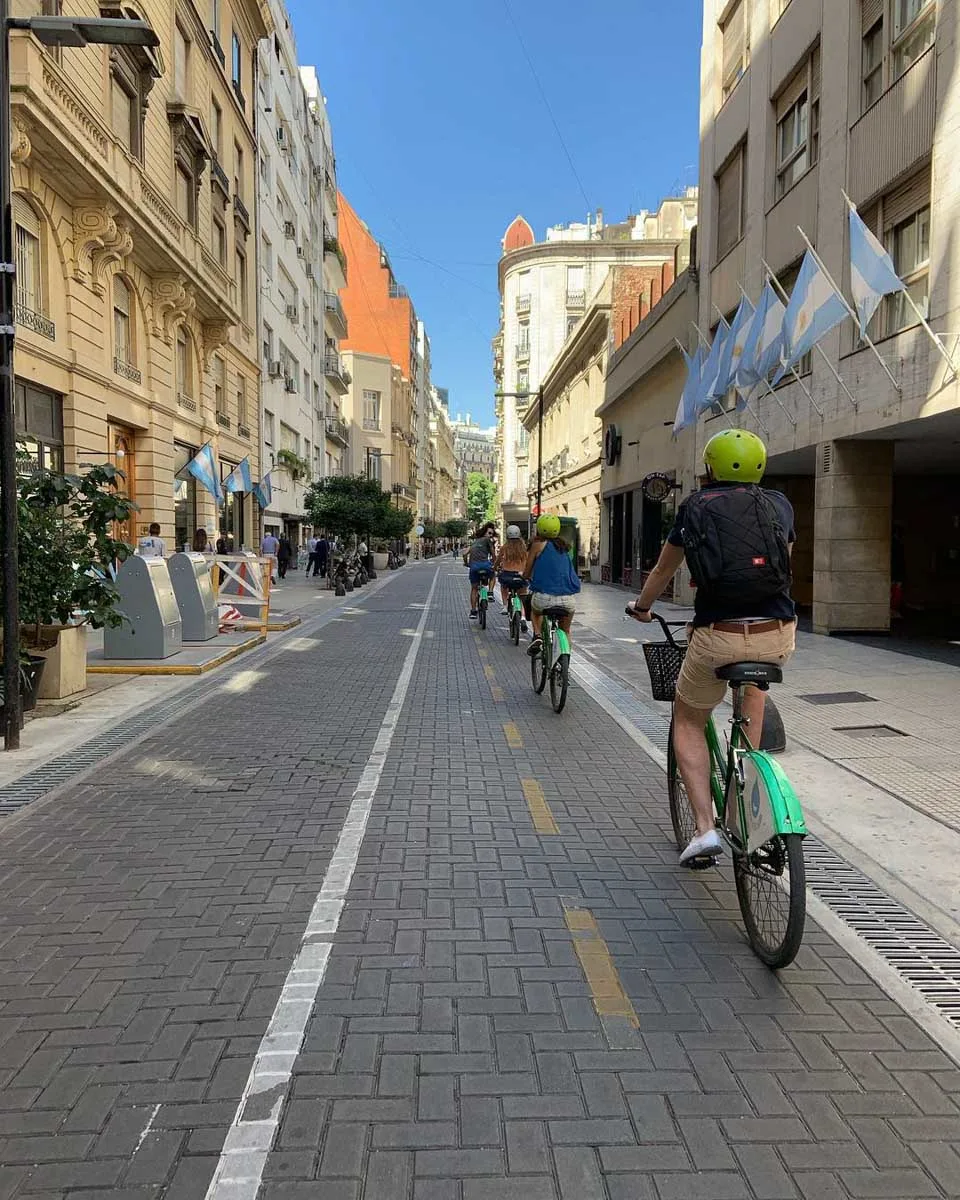

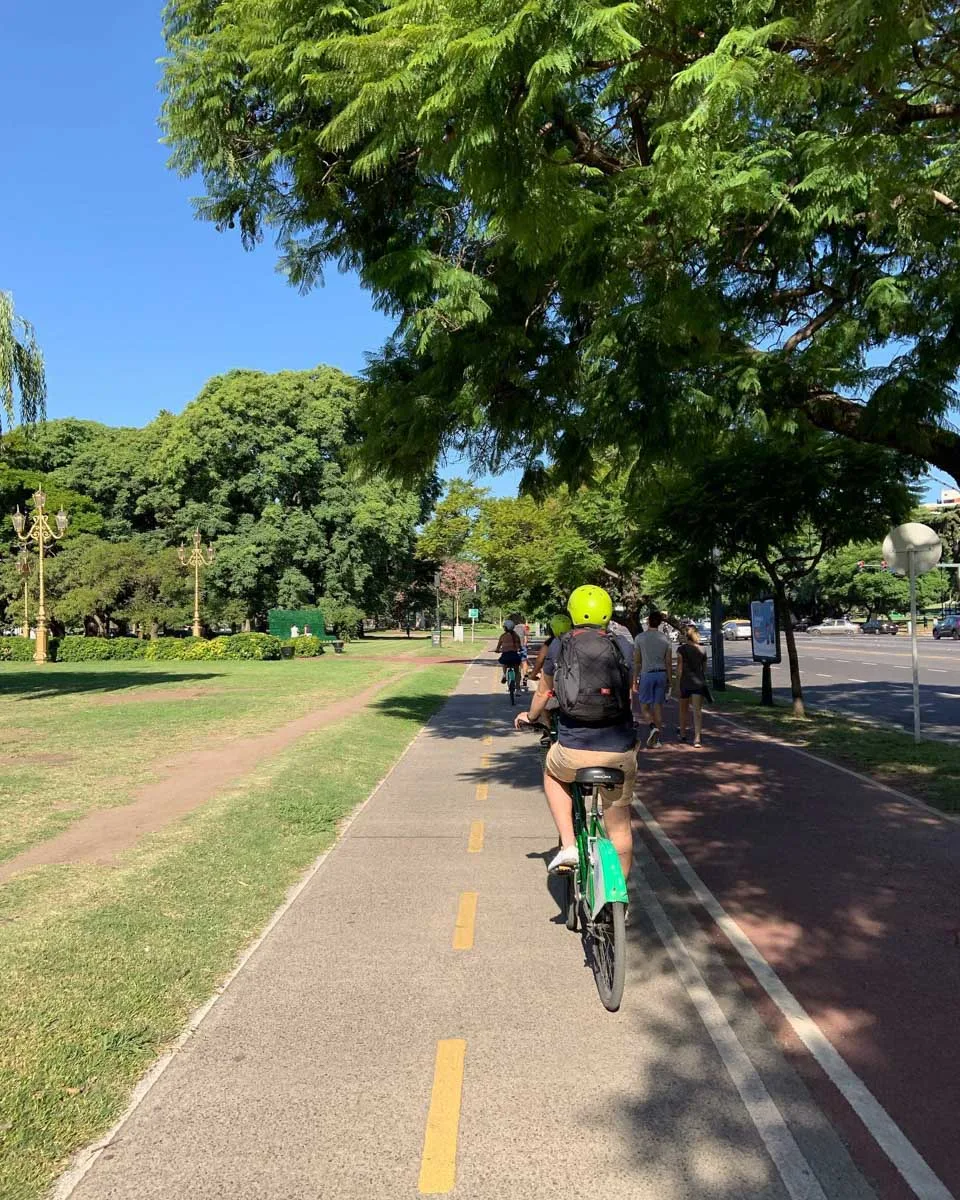
Cycling is a great (and healthy!) way to explore Buenos Aires and work off all that asado.
The city has over 250 kilometers (155 miles) of bike lanes and is one of the most cycle-friendly cities in South America, so it’s definitely worth exploring on two wheels.
There are plenty of places where you can rent a bicycle, but Rental Bike Argentina is one of the best. They’re located close to Plaza Dorrego, so it’s easy to pick up a bike and start exploring the city’s central neighborhoods. It costs $4 USD for a two-hour rental, $15 USD for the day or $18 USD for a full 24 hours.
If you’d prefer to have a guide to show you around, you can also book a cycling tour to tick off all the highlights of Buenos Aires. You’ll explore downtown, see iconic places such as the Plaza de Mayo and La Bombonera, and finish by riding through the beautiful Costanera Sur Ecological Reserve.
Tour prices start at $33 USD per person, and there’s a maximum of 12 participants per group, so you know that things won’t get too crowded.
Related read: Trade your bike for crampons and go glacier trekking! It’s one of the best things to do in El Calafate, Argentina.
25. Visit Tigre


Tigre is a cool little town located just outside of the city. In fact, it’s one of the best day trips from Buenos Aires!
It’s a gateway to the Paraná Delta, where you can find Islands of Peace and a range of activities such as birdwatching, fishing, kayaking, and more. However, the town itself is also well worth checking out thanks to its museums, antique shops, and lovely parks.
Interestingly, there were never any tigers in Tigre. However, Spanish colonizers had never seen tigers before and mistook the area’s native jaguars for tigers. The name has stuck ever since!
There are a couple of ways to get to Tigre from Buenos Aires but the easiest is by train. You can take a direct train from Retiro LM to Tigre for $1 USD and it takes just under half an hour.
In Tigre, there’s the Museuo del Mate where you can learn all about the history of mate and its role in Argentine culture. If you go on the weekends, you can join a guided tour in English for the 60 peso ($3 USD) admission fee.
There’s also a fruit market, a cool little art museum and a theme park, which is great if you’re traveling with kids, although lines can be long during peak season.
However, the number one must-do activity in Tigre is taking a tour of the Delta.
You can either buy a boat ticket from the river station or rent a kayak and explore the Delta’s network of canals and islands for yourself. It’s an idyllic way to pass a few hours and a chance to appreciate some more of Argentina’s incredible natural beauty.
You can also book a half-day trip that will take you through Buenos Aires’ northern suburbs and on a catamaran cruise through the Delta. This tour also includes a stop at the Puerto de Frutos market in Tigre where you can sample and purchase some mouthwatering tropical fruit. It’s under $50 USD and if you’re staying in Buenos Aires, it includes pick-up from all downtown hotels.
Where to Stay in Buenos Aires, Argentina


Now that you know how much color and life this city has, you’ll want to find a great hotel to stay at to experience it all! As you’re narrowing it down, you can take a peek at our guide to the best areas to stay in Buenos Aires.
You don’t need to break the bank to stay here, but if you are searching for a luxurious getaway, you can find that too. Here are my top picks for various price ranges!
Selina Palermo – $
Stay in one of the trendiest neighborhoods of Buenos Aires on a budget! Selina Palermo puts you close to the best bars and nightclubs – giving you a great place to crash after a night on the town. The place feels really modern and there are nice extras like a rooftop bar, breakfast, and bike rentals available.
Shared dorm rooms with bunk beds are around $20 USD per night. If sharing isn’t your style, there are affordable private rooms with nice balconies overlooking the city starting around $60-80 USD. You can book your stay on Booking.com or HostelWorld.com to secure your room!
Broadway Hotel & Suites – $$
Centrally located in the heart of Buenos Aires, the Broadway Hotel & Suites offers really spacious rooms at a great price. The swimming pool on the roof has amazing panoramic city views and a sun deck to soak up some rays. The rooms feature large windows, minimalistic art deco-type décor, and bathrooms with marble fittings. You’ll also have plenty of choices for shopping and restaurants nearby. A junior suite here can be under $70 USD!
Hilton Buenos Aires – $$$
You can’t beat the location with the riverside Hilton Buenos Aires. You’ll be within walking distance to downtown as well as the Playa Reserva Ecológica Buenos Aires. There’s a rooftop pool to relax in or sit down for a meal or drink at the hotel’s restaurant or bar. The service is exceptional and the rooms are spacious. It is a more expensive place to stay at $250-350 USD per night, but worth it if you’re looking for a five-star experience.
Planning your Trip to Argentina


Accommodation in Argentina
Booking accommodation is one of the biggest aspects of your trip, and we should know as we stay in a new hotel up to 40 times per year! Funny enough, we make 99% of these bookings on one website and that’s Booking.com – and there are a few reasons why we use this site!
Number one is the website is easy to use and sorts accommodation options. That takes the stress out of planning which honestly still affects us and we do it more than not.
Second, is the price guarantee. We have literally booked a hotel months before and then 1 week out found it cheaper (we always do a quick search), and they’ll match that price from anyone’s website including the hotels!
And third, is the Genius loyalty program. If you make a certain amount of bookings per year you get a Genius discount. We are level-two geniuses because we make more than 5 a year. At participating hotels, we get things like free breakfast included, early check-in, and up to 15% off.
You can check out all their accommodation options throughout Argentina!
Renting a car in Argentina


We enjoyed a rental car for our second trip to Argentina when we travelled in Patagonia – and wow, what a way to travel! But the best part was that we only paid $40 USD per day for a 5-person sedan!
But how? Well, if you’re renting a car in Argentina, the cheapest company is Discover Cars. We often get questions from readers asking us if the website is fake because it seems too cheap! It’s a great website and the one we used for our rental.
If you do want to compare prices (and you should), do a quick search on Airport Car Rentals too. They’re another big competitor and each company often has its own deals to offer!
Tours in Argentina


Tours are a tricky one. We love booking online because we can check reviews of that exact tour but they can be pricier than booking directly in person. So for this, we often do it 50/50 – half of the time in person and the other half of the time we book tours online in advance.
When we do book online, we use Get Your Guide and Viator. Both companies offer the same service with different selections of tours and reviews on each tour.
Thanks for reading!


Buenos Aires is a huge place with so many things to do. I actually found it a bit intimidating when I first arrived, but after spending more time in the city, it really grew on me. It’s a place where you can dance the night away, eat delicious food, drink fantastic wine or craft beer, see amazing architecture and lose yourself on the colorful streets.
I hope your Buenos Aires bucket list is full after reading this guide! Make sure to check out our other Argentina blogs before you book your plane ticket. We have lots of ideas for you and places to discover that you may not have heard of.
Ultimate Guide to Visiting Puerto Madryn, Argentina
21 Amazing Things to do in Patagonia – Our Patagonia Highlights
The Best Time to Visit Perito Moreno Glacier
This post was originally published on 3rd party site mentioned in the title of this site

